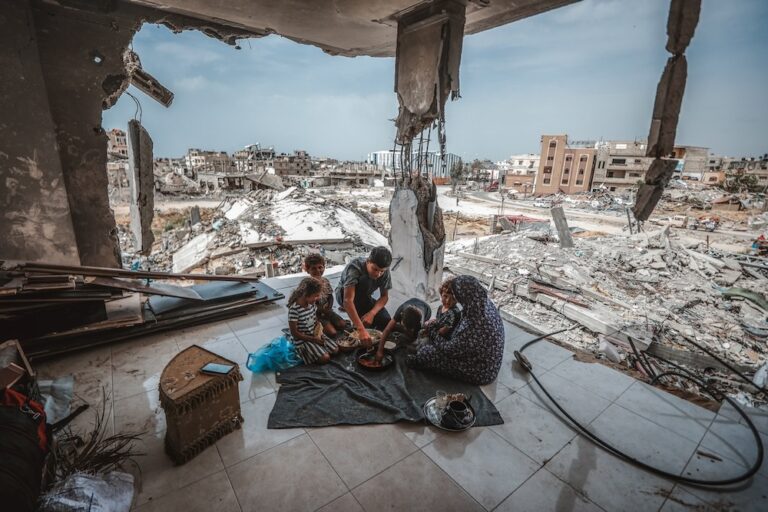(WAN/IFEX) – The following is a WAN press release: Berlin, 28 November 2000 For immediate release Press Freedom 2000: Wartime Toll Declines, But Murders Rise The number of journalists killed while covering wars has dropped dramatically in 2000, but many more journalists have been assassinated, the World Association of Newspapers said in its annual review […]
(WAN/IFEX) – The following is a WAN press release:
Berlin, 28 November 2000
For immediate release
Press Freedom 2000: Wartime Toll Declines, But Murders Rise
The number of journalists killed while covering wars has dropped dramatically in 2000, but many more journalists have been assassinated, the World Association of Newspapers said in its annual review of the press freedom situation world-wide.
In a report to its annual Board meeting in Berlin, Germany, on Tuesday, the Paris-based WAN said 46 media workers had been killed so far in 2000, compared with 71 in 1999. Seven journalists have died in crossfire in conflict areas, compared with 46 in 1999.
But many more journalists were murdered in 2000 than last year, WAN said. Latin America, with 14 killings, and Asia, with 13, have the highest number of victims. Colombia (8) and Russia (6) remain the most dangerous countries in which to be a journalist. Details of all cases can be found on the WAN web site at www.wan-press.org/pf/killed/index.html
The WAN Board also heard that at least 83 journalists remain behind bars world-wide; three-fifths of them have been in jail for three years or more. Burma, China, Iran and Ethiopia have the largest number of journalists in jail.
In a region-by-region review, WAN said:
Middle East
With the outbreak of violence in the West Bank and the Gaza Strip, the Israelis and Palestinians have also become engaged in a media battle. Thirteen journalists have been shot in the region in the last two months. Most of them were apparently victims of the Israeli Defence Forces, which deny specifically targeting journalists.
In Iran, the reformist victory in elections has not meant a corresponding victory for the press: more than 30 moderate newspapers have been closed down and dozens of journalists have been arrested since the elections in the spring. In the past, banned newspapers have quickly reappeared under new titles, but this has now been prohibited by law.
Two sons have succeeded their fathers as heads of state in the Middle East this year: King Al Assan of Morocco and Bashar al-Asad of Syria. Since Al Assan’s ascension to the throne, several foreign publications have been banned and journalists arrested in Morocco. There have been some positive developments in Syria, where 5 journalists have been released since Asad’s appointment. But Nizar Nayouf, the winner of the WAN Golden Pen of Freedom and the UNESCO World Press Freedom Prize, remains in prison.
Europe
The year has been a violent one for journalists in Spain, with increased terrorism from the Basque separatists ETA and from the Anti-Fascist Resistance Group GRAPO. There have been several bomb attacks against the newspapers El Mundo, El Correo, El Pais, La Razon as well as against
National Radio and the private television station Antena 3. In May, Jose Luis Lopez de Lacalle, a journalist for El Mundo and one of the most prominent advocators for peace in the region, was shot to death in the Basque country.
A revolution unfolded in the Yugoslavia media scene with the ousting of Slobodan Milosevic and the election victory of Vojislav Kostunica in late September. The political situation is far from clear, but Mr Kostunica has freed two journalists from prison and set aside the notorious Public Information Act.
Repression of the media continues in Belarus, where what is left of the independent media could be closed down when all economic enterprises must re-register early next year. In Russia, the state has come into open conflict with major media owners, and legal action has intensified against media with the founding of the Ministry of Press and the increasing influence of the Security Council. The mistreatment of prominent journalists — Andrei Babitsky, Grigory Pasko, Alexander Nikitin has drawn international attention and condemnation.
Latin America
The region has seen the most violence against the press in 2000, with 14 journalists killed in Colombia, Haiti, Mexico, Uruguay, Peru and Guatemala. Meanwhile, political shifts in Mexico and Peru are bringing to light the financial link between the former governing party and the nation’s leading newspapers. With the defeat of the Institutional Revolutionary Party, which had run Mexico since 1929, many of the dailies in Mexico City are facing bankruptcy.
Asia
Wartime censorship regulations were reinforced and extended in Sri Lanka and the government engaged in nearly two decades of combat with the Tamil Tigers now has overriding power to ban or censor newspapers and close down printing presses. In Pakistan, the military regime of General Musharaff has harassed and pressured two leading press groups, Jang and Dawn, and newspaper offices have been regularly ransacked.
In the Philippines, over twenty journalists were kidnapped by rebels in the summer. In Bangladesh, a State Minister for Social Welfare set a troubling example last month when he urged government and Awami League leaders: “wherever you find journalists, break their bones”.
Africa
In a law that took effect on Monday, journalists in the Nigerian state of Kano will be caned 60 times in public for “offensive stories”, whilst in Zimbabwe the Minister for Information warned that press laws would be amended to silence two independent newspapers “once and for all”.
Last week, one of the most prominent editors in Africa and the founder of the first Mozambique daily, Carlos Cardoso, was shot dead in an ambush not far from the offices of his newspaper Metical in Maputo.
The full presentation is available on the WAN web site at www.wan-press.org/pf/roundup.html. More information on 15 selected countries is also available at www.wan-press.org/pf/headlines/index.html
The Paris-based WAN, the global organisation for the newspaper industry, defends and promotes press freedom world-wide. It represents 17,000 newspapers; its membership includes 66 national newspaper associations, individual newspaper executives in 93 countries, 17 news agencies and seven regional and world-wide press groups.


